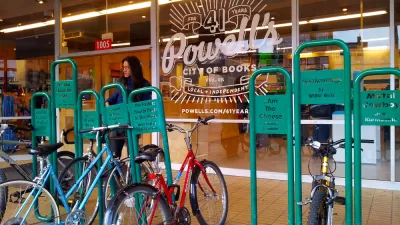A recent law prohibits ‘defensive’ architecture designed to keep people away from buildings or public spaces.

It’s been one year since Brazil passed a law banning “hostile architecture,” infrastructure designed to prevent people from sitting or lying in public spaces. Hostile architecture is widely used around the world to limit access for people deemed ‘undesirable,’ explains Raphael Tsavkko Garcia explains in Next City.
The decree stipulates measures to curb the use of hostile materials, structures, equipment and construction techniques in open spaces for public use. It also requires urban planning tools and policies, such as zoning regulations and building codes, to help prevent the use of hostile architectural elements.
However, some cities have been slow to implement the law, and experts say hostile architecture or “defensive design” is part of a broader social problem. “Architects Elenara Stein Leitão, Oscar Muller and Vinicius Gonçalves tell Next City that hostile architecture is just one facet of ‘a society that focuses on security, often the fruit of social exclusion, in which it would be possible to differentiate into two strands: the security of those who own property and the expulsion of the undesirables.’”
FULL STORY: One Year Ago, Brazil Banned Hostile Architecture. Easier Said Than Done.

Alabama: Trump Terminates Settlements for Black Communities Harmed By Raw Sewage
Trump deemed the landmark civil rights agreement “illegal DEI and environmental justice policy.”

Study: Maui’s Plan to Convert Vacation Rentals to Long-Term Housing Could Cause Nearly $1 Billion Economic Loss
The plan would reduce visitor accommodation by 25% resulting in 1,900 jobs lost.

Planetizen Federal Action Tracker
A weekly monitor of how Trump’s orders and actions are impacting planners and planning in America.

Baltimore Ordered to Improve Sidewalk Accessibility
The city is one of many to face lawsuits for failing to comply with the Americans with Disabilities Act.

This Toronto Suburb Has More Bus Riders Than Columbus, Ohio
Brampton, Ontario used gradual improvements in service to prove that if you build it, they will ride.

Paris Bike Boom Leads to Steep Drop in Air Pollution
The French city’s air quality has improved dramatically in the past 20 years, coinciding with a growth in cycling.
Urban Design for Planners 1: Software Tools
This six-course series explores essential urban design concepts using open source software and equips planners with the tools they need to participate fully in the urban design process.
Planning for Universal Design
Learn the tools for implementing Universal Design in planning regulations.
Smith Gee Studio
Alamo Area Metropolitan Planning Organization
City of Santa Clarita
Institute for Housing and Urban Development Studies (IHS)
City of Grandview
Harvard GSD Executive Education
Toledo-Lucas County Plan Commissions
Salt Lake City
NYU Wagner Graduate School of Public Service




























